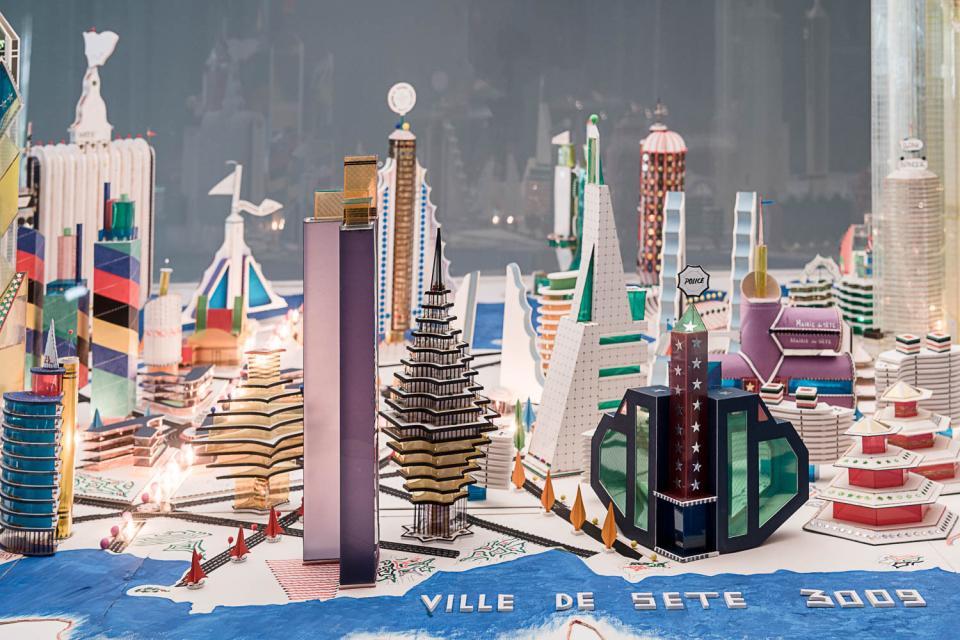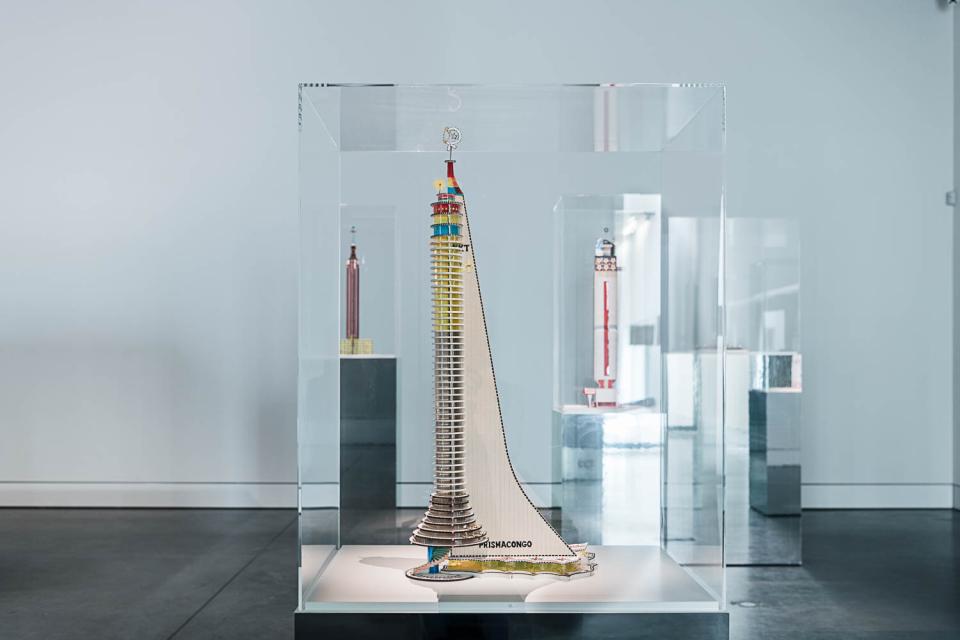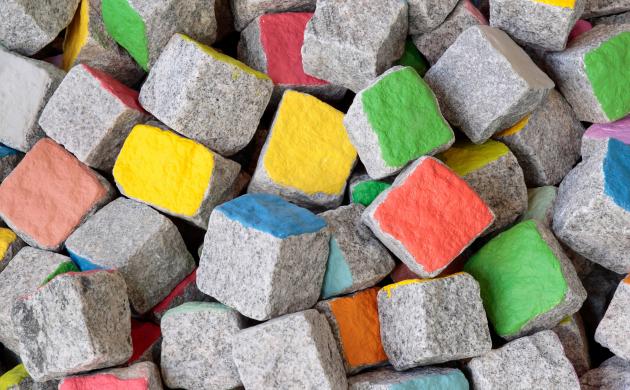- The number of the artwork corresponds to the number on the exhibition route in the visitor's guide.
- You can also find this artwork in the virtual tour.
Bodys Isek Kingelez was born in 1948 in the village of Kimbembele Ihunga in the Belgian Congo, now the Democratic Republic of the Congo. In 1970, he relocated to Kinshasa—the capital of the newly independent nation renamed Zaire—to pursue an education at the University of Lovanium. After learning some concepts about industrial design there, he felt the strong urge to start creating models with the materials available at hand, and all his production is made of recycled cardboard, paper, plastic, commercial packaging, straws, and more. After some years working as a restorer of traditional sculpture at the National Museums Institute of Zaire, he devoted himself to making art full-time in the early 1980s. His participation in the 1989 blockbuster exhibition Magiciens de la Terre at the Centre Pompidou Paris marked the beginning of an international career, and since then his work has been shown in numerous worldwide exhibitions. Some of his recent group shows include Art/ Afrique: le nouvel atelier – Les Initiés: un choix d’oeuvres (1989-2009) de la collection d’art contemporain africain de Jean Pigozzi, Fondation Louis Vuitton, Paris (2017); Beauté Congo – 1926-2015 – Congo Kitoko, Fondation Cartier, Paris (2015-2016); 100% Africa, Guggenheim Museum, Bilbao (2006-2007). Kingelez presented solo exhibitions at the Haus der Kulturen der Welt, Berlin (1992); at the MAMCO Contemporary and Modern Art Museum, Geneva (1996), among others. In 2018 he received a retrospective at the Museum of Modern Art in New York. Bodys Isek Kingelez’ thirty-year career entirely revolved around the creation of what he called “extreme maquettes”, phantasmagorical models blending architecture, sculpture, and design, ranging from individual buildings to complex cities.A life-long resident of the DRC capital Kinshasa, the city, its bombastic chaos, rapid transformations, creative resourcefulness, and inventive spirit have been the artist’s inexhaustible source of inspiration and of the transfiguration of a bleak urban reality. Kingelez passed away in 2015.
Atandel (2000) / Prismacongo (2000) / 2001 (2001) / Mickaël (2001) / Armostrong Ville (2001) / Sète en 3009 (2000)
Number 9 on the exhibition route
Location: collection pavilion
Kingelez created scale models, from buildings to entire cities, architectural fantasies that mix elements from Kinshasa with components that he encountered around the world or imagined himself. Made entirely of cardboard, these models are not escapist dream worlds, but utopian alternatives that the artist proposes to restore the failed ideals of the post-colonial world. How do we offer better care and education? But also, how to imagine bright, colourful urban societies that promise freedom, justice, and peace for all? Kingelez’ pieces are a reminder of the limitless power of inhabitants of postcolonial cities to reinvent them. They are the proof that nothing is set in stone.

Bodys Isek Kingelez, Sète en 3009 (2000). _© The Artist & MIAM. Photo: Léonard Pongo

Copyright: Bodys Isek Kingelez, Prismacongo (2000). © The Artist & Ferdinand Fabre. Photo: Léonard Pongo




